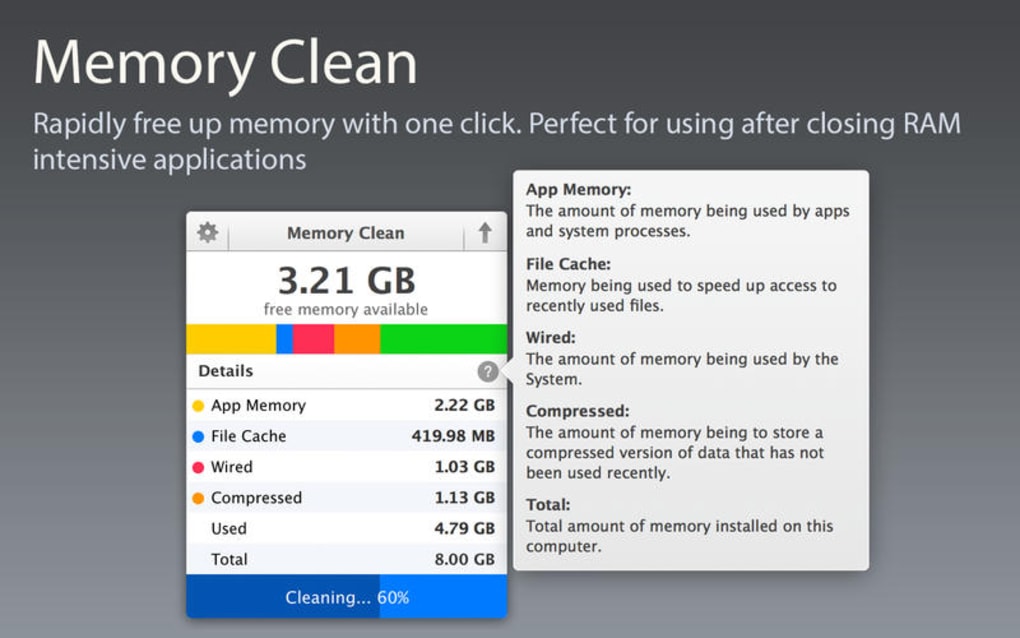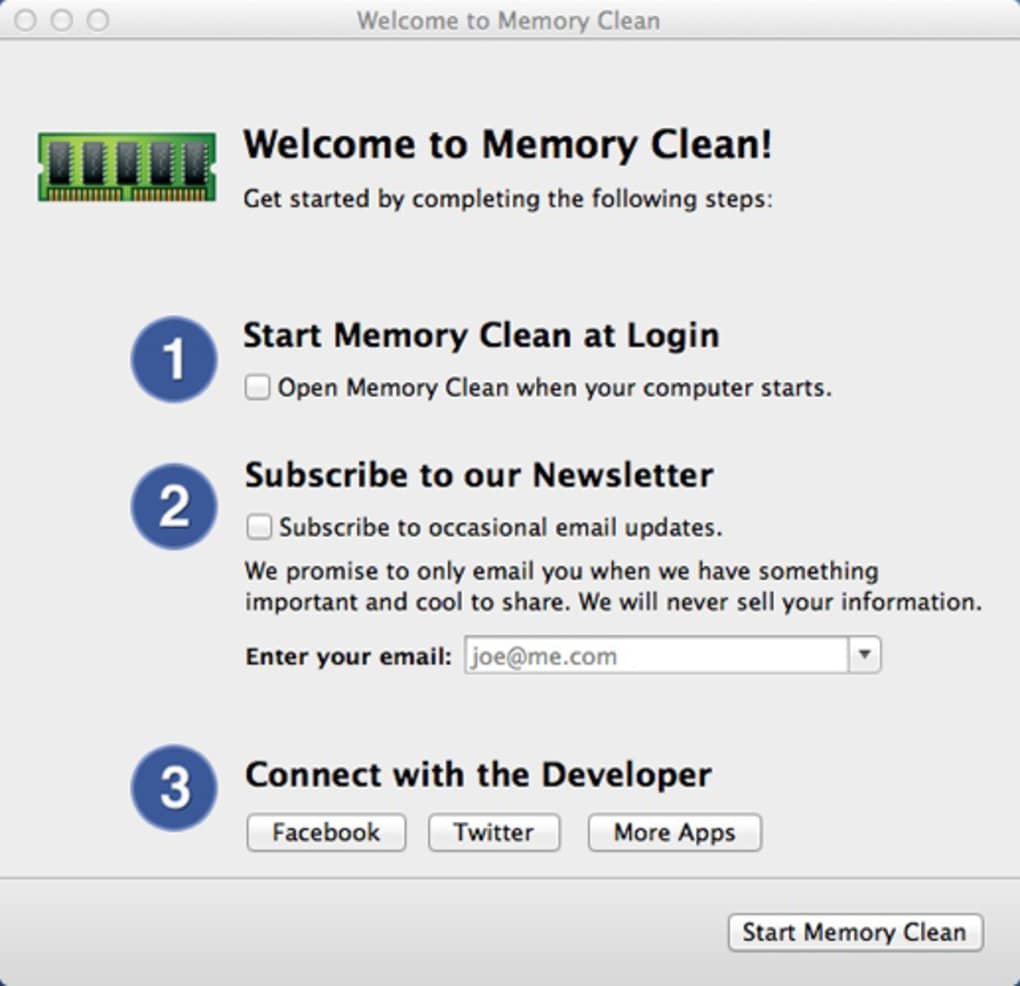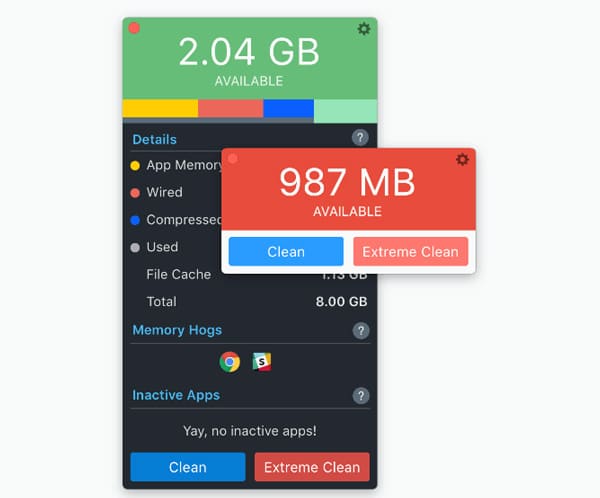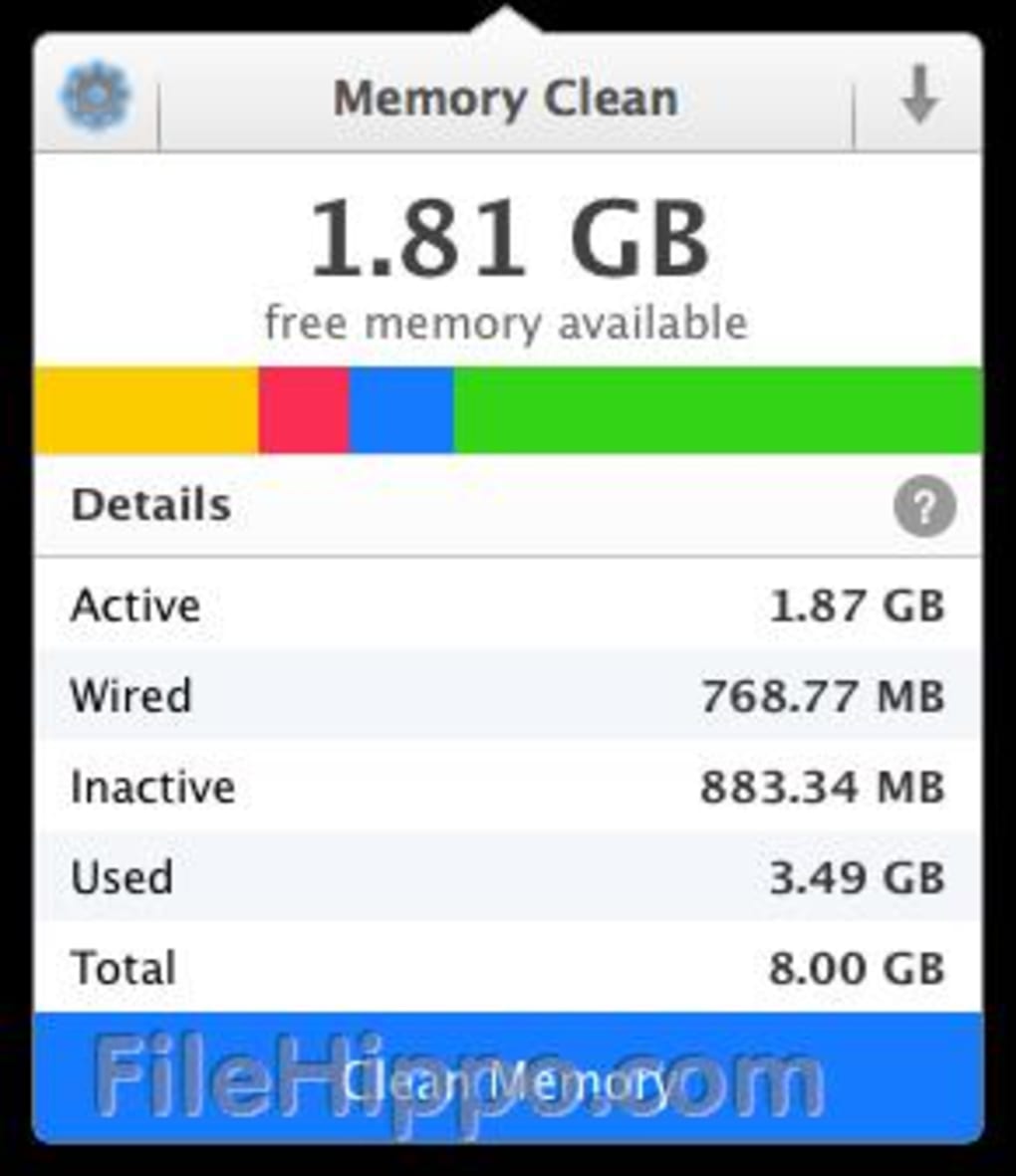

With the network set to bridge a container will use docker’sĭefault networking setup. Loopback interface enabled in the container but it does not have any With the network is none a container will not haveĪccess to any external routes. Use the network stack of another container, specified via its name or id.Ĭonnects the container to a user created network (using docker network create command) Use the host's network stack inside the container.
MEMORY CLEAN MAC MAC
MAC address via the -mac-address parameter (format: 12:34:56:78:9a:bc).BeĪware that Docker does not check if manually specified MAC addresses are unique.Ĭonnect the container to the bridge via veth interfaces. You can set the container’s MAC address explicitly by providing a Your container will use the same DNS servers as the host by default, butīy default, the MAC address is generated using the IP address allocated to theĬontainer.
MEMORY CLEAN MAC DRIVERS
You should always prefer using Docker network drivers over linking. Publishing ports and linking to other containers only works with the default (bridge). In cases like this, you would perform I/O through files or With docker run -network none which disables all incoming and outgoing The operator can completely disable networking link-local-ip= : Sets one or more container's Ethernet device's link local IPv4/IPv6 addressesīy default, all containers have networking enabled and they can make any ip6="" : Sets the container's Ethernet device's IPv6 address

ip="" : Sets the container's Ethernet device's IPv4 address mac-address="" : Sets the container's Ethernet device's MAC address

add-host="" : Add a line to /etc/hosts (host:IP) network-alias= : Add network-scoped alias for the container 'host': use the Docker host network stack 'container:': reuse another container's network stack 'bridge': create a network stack on the default Docker bridge network="bridge" : Connect a container to a network dns= : Set custom dns servers for the container “donor”)Ĭontainer, and "container:" for other containers. Of the containers, using "shareable" mode for the main (i.e. If these types of applicationsĪre broken into multiple containers, you might need to share the IPC mechanisms Memory is commonly used by databases and custom-built (typically C/OpenMPI,Ĭ++/using boost libraries) high performance applications for scientificĬomputing and financial services industries. Memory speed, rather than through pipes or through the network stack. Shared memory segments are used to accelerate inter-process communication at IPC (POSIX/SysV IPC) namespace provides separation of named shared memory Or "shareable", depending on the daemon version and configuration. If not specified, daemon default is used, which can either be "private" Join another (“shareable”) container’s IPC namespace. Own private IPC namespace, with a possibility to share it with other containers. Own private IPC namespace, with /dev/shm not mounted. ipc="MODE" : Set the IPC mode for the container Programs might write out their process ID to a file (you’ve seen them as PID equivalentįinally, to help with automation, you can have Docker write theĬontainer ID out to a file of your choosing. This works for both background and foregroundĬontainers on the default bridge network must be linked to communicate by name. If you specify a name, you can use it when referencing theĬontainer within a Docker network. Defining a name can be a handy way to add meaning to aĬontainer. If you do not assign aĬontainer name with the -name option, then the daemon generates a random The UUID identifiers come from the Docker daemon. The operator can identify a container in three ways: Identifier type Not terminate on SIGINT or SIGTERM unless it is coded to do so. It ignores any signal with the default action. Run the container in the background in a “detached” mode or in theĪ process running as PID 1 inside a container is treated specially by Linux: When starting a Docker container, you must first decide if you want to

For more information about this configuration, refer to the Docker Having to use sudo with the docker command, your systemĪdministrator can create a Unix group called docker and add users to Required to preface the docker run command with sudo.
MEMORY CLEAN MAC HOW TO
To learn how to interpret the types of, seeĭepending on your Docker system configuration, you may be Operator’s ability to override image and Docker runtime defaults is why Override nearly all the defaults set by the Docker runtime itself. With the docker run an operator can add to or override the The docker run command must specify an IMAGE


 0 kommentar(er)
0 kommentar(er)
